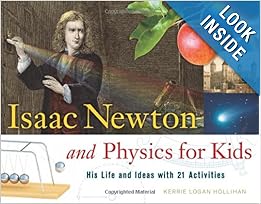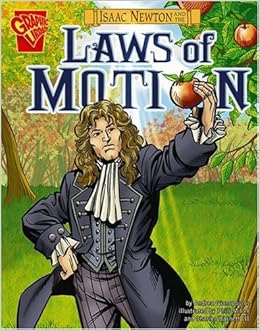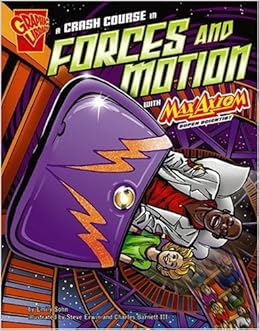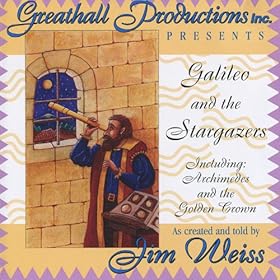
Classical Conversations Cycle 2 Week 17 and 18
We’re still in the taxes-filled zone around here (see Week 15 and 16 for more dull details, if you want them), so once again, I’m combining my Week 17 and 18 into a single post.
History
I don’t know about you guys, but I think some of the hardest memory sentences are the ones which are really just a list of names. We acted out the ones from the Renaissance (Week 6) based on their occupation. We used the dress-up game for WWI leaders (Week 14). And now for WW II leaders, we did some goofy acting out. I did print out Melody Stroud’s history cards (we’re using ALL her cards at home for review, see below) from CC Connected (listed under melodystroud) to use as additional visuals in class (I think it’s nice to try to introduce the grammar in a way that works for at least two learning styles if you can). We held our arms in a big “X” for Axis and shook our hands in front of us (like the “England” sign for “Alfred the Great of England” in the Timeline motions). Here are the GOOFY motions we used for the leaders:
- Hitler: hit our palm with our other fist (we also used this in Week 16, so at least we’re consistent in our goofiness)
- Tojo: lifted our foot and pointed to our toe
- Mussolini: hands on our heads with fingers spread apart like the antlers of a moose (we also use that this week for our _bimus Latin ending. Again, we are nothing if not consistent in our insanity.)
- Churchill: form fingers into church and steeple . . . you know the little children’s rhyme “Here is the church, here is the steeple . . . “
- Roosevelt: pretend to smell a rose
- Eisenhower: point to our eye
- MacArthur: salute
- Stalin: finger over our upper lip like a mustache
I know that you are now SO impressed that you will insist that CC adopt these as their standard hand motions and next time we do this cycle, I’ll be featured in my own video on the website, right there with the woman doing ACTUAL sign-language in the Timeline video. Right? Sure.
We used those same basic hand motions for Roosevelt, Churchill and Stalin during Week 18.
There’s a nice little overview of the United Nations in the following video. It probably goes without saying that the United Nations is a hot topic, which raises wildly differing views. This is a simple, positive video overview or the formation, intent, and structure of the UN that I would say is very appropriate (if a bit dry) for Foundations-level students. Skip reading the comments on the video (visible if you access it directly at YouTube), many of which are NOT kid-friendly.
And, if you’re a fan of Kid President, here’s a video of his visit to the UN for World Humanitarian Day (not so much educational, but he’s a cute kid):
The following video about the UN gave me flashbacks of high school, but it is a pretty straight forward overview of the history, purpose, and structure of the UN.
http://www.youtube.com/watch?v=-4b0bEW-f9I
Science
This book looks great! I have it on hold at the library and will update you in a week or so after we’ve had a chance to read and use it!
Got a child who loves graphic novels and comic books? I have two! If you do, check this one out, it gets excellent reviews and sounds perfect for early elementary!
And while we’re on a graphic novel roll, this looks interesting, too (and there’s one on States of Matter in the same series . . . why am I just discovering this now???):
And of course, this is usually a reliably good series, too:
If you enjoy Peabody and Sherman videos, don’t overlook the one on Isaac Newton.
There’s a series of short videos available at Biography.com on Isaac Newton. I’ve watched the “Mini Biography” and it’s great. I have not yet watched the others, so I would recommend that you preview them before you show your children.
There’s also a section on Isaac Newton on Jim Weiss’ CD “Galileo and the Stargazers” Audio CD, which I also recommended for learning about Copernicus back on Week 6 of this cycle.
If you didn’t see it in my last post, here’s a way to illustrate all three of Newton’s laws of motion using matchbox cars:
http://www.ehow.com/how_6872995_do-cars-teach-laws-motion_.html
Science Project
I felt like this week’s science experiment needed some explanation beyond the projects/experiments. I’m going to outline what I chose to do here, just in case it’s helpful to another tutor or two as a jumping off point for doing something (probably something much more impressive!) for your own class. With a little help from my husband (who managed to round up things that were basically trash from around the house to help me out!), I did a little bit of an illustration before we dug into the outlined projects from the Foundations guide. I took an old lampshade to class (Yep, that’s right, a lampshade. We homeschoolers are resourceful folk.) and we pretended that it was a mountain. I showed the kiddos a matchbox car and explained that there were basically 3 ways to get the car to the top of the mountain:
- Lift it straight up, which would take a LOT of force/strength/energy,
- Build a long ramp that leads from the top of the mountain down to a point in the distance away from the mountain (I illustrated this with a piece of yarn stretched from the top of the mountain to a point down on the table. We pretended to drive the car up it and introduced the term “inclined plane.”). This would take longer, but would require less effort,
- Or (and largely because we can’t just build HUGE ramps everywhere) we can twist the inclined plane around the mountain, so the car can drive up it without having to start VERY far away from the base of the mountain.
Then we did the pencil/paper science project illustrating the same thing, so that they could all do it themselves. Using the yarn made it easy to illustrate why it would also take LONGER to get up the mountain on the inclined plane wrapped around it (the angle becomes more shallow and the road gets longer than the ramp would be) than it would to drive up a ramp built up its side.
Then, I took a rubber doorstop and explained that sometimes an inclined plane is used as a wedge to lift something heavy. After demonstrating that, it was easy to tie in the road illustration and the wedge illustration to explain that a screw is a type of “winding wedge” and we did the second experiment.
There are also some great videos available on the subject! A fellow tutor showed the following two to her class to help explain the experiments and they were captivated.
There’s also this one:
And, finally, here’s nice, simple experiment (performed by a kid) to illustrate the benefit of an inclined plane and how it works as a tool. She doesn’t actually do all the measuring, but I think you’ll all understand what she’s saying – if you lift the heavy object straight up, the rubber band will stretch more than it will when you pull it up the inclined plane because it takes less effort when you use the inclined plane, which is a simple, but very helpful, tool. The effort will be even less (and the rubber band will stretch less) when you make the angle of the inclined plane less steep. So, just like in our pencil and paper experiment for CC this week, it might take longer to get up the incline, but it also takes less work.
Geography
Man, I’ve been waiting for us to get caught up with this Geography review game for weeks 13-18! My son will be thrilled that there’s a new geography game to play!
Fine Art
I purchased the following video series, called Understanding Art: Impressionism. We have not yet watched it, so I’ll have to report back later! The Full Season instant video can be purchased from Amazon for $9.99 (the DVD retails for $52), or individual episodes are available for $2.99. I think Monet is discussed in nearly every episode (no surprise), Degas and Morisot are discussed in at least one (Episode 3 – Painting to the People).
Edit: I’ve started watching the series, and while I think it is very interesting and informative, some of the information is more sensational than I think appropriate for my children. My husband and I will probably finish watching it together (it IS interesting!) and gauge what age it might be appropriate for our children, but 7 and 5 are not the right age, in my opinion.
Week 17, Degas:
Once again, I’m recommending a book (and video if you can find it!) from Mike Venezia’s “Getting to Know” series. I’ll spare you the accolades about the series. Just check all the other posts where I’ve recommended them.
These Anholt Artists books are also very sweet storybook-style books about artists. Not as many facts, but excellent as an introduction.
Week 18 Morisot:
I needed help with pronunciation of her name! Do you? If so, this is very helpful!
There is a short video about a Morisot painting available here at Christies (related to the sale of the painting being described) that discusses her technique and how it relates to other Impressionist artists.
http://www.christies.com/features/gallery-talk-berthe-morisot-apres-le-dejeuner-3190-
If you’re looking for a good resource for images of Morisot’s work, these two sites seems to have a good selection:
http://www.ibiblio.org/wm/paint/auth/morisot/
http://www.nationalgallery.org.uk/artists/berthe-morisot
Review Games
I printed off all of Melody Stroud’s History sentence cards from CC Connected, cut them up, shuffled all the weeks that we’ve been through so far and handed them to my kiddos to sort into complete sentences. This was even more challenging for them than I thought it might be, so I go involved in “helping” them figure it out (in the sense that “helping” means handing my daughter a card every once in a while when she knew what was next but couldn’t actually seem to see the card, or the sense that “helping” means handing stacks of cards my daughter had put in order to my son with instructions to “double check and make sure we got it right”). It probably took nearly an hour, but they got a GREAT review of the history sentences in the process! We’ll be doing this exercise again soon!
This post is linked to:








.jpg)




4 Comments
Geri
Your website is really great! Thank you. I wish I would have found you at the beginning of the year. But the last 6 weeks will be just fine! And thank you for the Berthe Morisot pronunciation- I honestly didn’t know that I needed it! You saved me-BIG TIME! 🙂
LB
Thank you so much, Geri!
Colleen
Great information for digging deeper with CC! Way to go! Love it! 🙂 Thank you for linking it up on Wonderful Wednesday’s Link-Up.
LB
Thanks for putting the link-up together! Always looking to glean good ideas from other CC families! 🙂